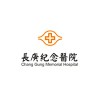YH1 in Poorly Controlled Type 2 Diabetes
Type 2 Diabetes

About this trial
This is an interventional treatment trial for Type 2 Diabetes
Eligibility Criteria
Inclusion Criteria:
- 20-75 years of age;
- Diagnosed as type 2 diabetics based on World Health Organization criteria [1];
- Body mass index (BMI) ≥ 23 kg/m2;
- Have been treated with ≥ 3 kinds of oral hypoglycemic agents (OHAs) with persistent (> 6 months) high HbA1c (≥ 7.0 %).
Exclusion Criteria:
- Type 1 diabetes, gestational diabetes, or other specific types of diabetes;
- Have received insulin therapy in the past three months;
- Have serious gastrointestinal (GI) tract diseases, such as peptic ulcers or GI tract bleeding;
- Experience stressful situations, including diabetic ketoacidosis, nonketotic hyperosmolar diabetic coma, severe infection, or surgery in the previous one month;
- Suffer from hepatic insufficiency with alanine aminotransferase (ALT) 2 times the upper limit of normal or renal insufficiency with estimated glomerular filtration rate (eGFR) < 60;
- Uncontrolled hypertension (blood pressure ≥ 160/100 mmHg);
- Mental illness, abused or addicted to alcohol, psychoactive substances or other drugs;
- Pregnant, lactating, or plan to become pregnant;
- Hemoglobin disease or chronic anemia;
- Have underlying conditions that could lead to poor compliance;
- History of cerebrovascular disease or myocardial infarction;
- Have undergone Chinese medicine treatment in the past two weeks.
Sites / Locations
Arms of the Study
Arm 1
Arm 2
Experimental
Placebo Comparator
YH1 group
placebo group
YH1 with one batch number was manufactured by Sun Ten Pharmaceutical Co., Ltd., a renowned manufacturer of concentrated herbal extract granules conforming to the standards of good manufacturing practices (GMP) in New Taipei City, Taiwan. YH1 contains Rhizoma Coptidis (50 %) and Shen-Ling-Bai-Zhu-San (SLBZS) (50 %). SLBZS consists of Radix Ginseng, Poria, Rhizoma Atractylodis macrocephalae, Semen Lablab album, Rhizoma Dioscoreae, Embryo Nelumbinis, Radix Platycodonis, Semen Coicis, Fructus Amomi, Fructus Jujubae, and Radix Glycyrrhizae at a 3:3:3:2.3:3:1.5:1.5:1.5:1.5:1.5:3 ratio. Subjects in the YH1 group orally ingested two packages of granules (3 g/package) three times daily with warm water after a meal for 12 consecutive weeks.
The placebo was also prepared as granules by Sun Ten Pharmaceutical Co., Ltd., and the packaging of the placebo was identical to that of YH1. Subjects in the placebo group orally ingested two packages of granules (3 g/package) three times daily with warm water after a meal for 12 consecutive weeks.
Outcomes
Primary Outcome Measures
Secondary Outcome Measures
Full Information
1. Study Identification
2. Study Status
3. Sponsor/Collaborators
4. Oversight
5. Study Description
6. Conditions and Keywords
7. Study Design
8. Arms, Groups, and Interventions
10. Eligibility
12. IPD Sharing Statement
Learn more about this trial
